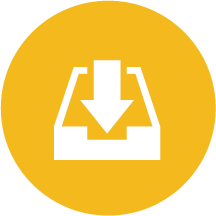Should I study IB Economics
IB Economics is offered at Higher Level (HL) and Standard Level (SL). For students who would like to further their studies in Economics or business-related disciplines at university, it is recommended that they take Economics at HL. Please note that for students applying to Economics at top UK/US universities, IB Mathematics HL may also be a pre-requisite and is definitely desirable.
How to get a 7 in IB Economics
IB Economics focuses heavily on application. Even though most students have a firm grasp of the economic concepts, they may still find it challenging to write an Economics essay under timed conditions. This involves skills such as connecting news articles to relevent theories and explaining the key assumptions that emerge.
In addition, the Economics Internal Assessment (Econ IA) is a very important component in IB Economics, since it constitutes 20% of the overall grade. The Economics IA requires students to write 3 commentaries covering different topics. To do well, you must select a newspaper article that discusses a specific economics topic (so the scope of the commentary is appropriate) and enhances both analysis and evaluation in your commentary to fulfil the marking criteria of the Econ IA.
How CANA coaches students to achieve a 7 in IB Economics
Besdies teaching the fundamental Economics concepts, our courses focus heavily on teaching essay writing techniques, comprehension and application of Economics theories using news articles, as well as analyzing and practicing different types of mathematical questions necessary for HL students. We expose our students to various essay types under different topics, as well as different types of Economics articles that would be used in the data response section. We also use our proprietary study guides and workbooks, co-edited with senior IB examiners, alongside past exam questions sorted by topics to enhance your ability to achieve top grades.
Our Econ IA guidance is second to none. We discuss the newspaper articles selected and why they are suitable, the structure of the IA itself, and offer reviews of the work to make sure that the grading criteria are met.
Students who have not written an Economics IA before may be uncertain of what counts as a “good” IA. The IB Economics IA (Internal Assessment) consists of three commentaries that are collectively worth 20% of your overall grade if you’re doing Economics HL, and 30% of your overall grade if you’re doing Economics SL. Each commentary must not exceed 800 words, and each should cover a different key concept with no overlap across the three IAs. Each IA is marked out of 14. To get as close to full marks as possible, students should follow three important tips:
1. Choose a suitable article
Set yourself up for the best chances of writing a good IA by selecting a good starting article. According to the IB guidelines, “extracts should be contemporaneous with the course, but they may include material collected up to one year before the commentary is written.” Most schools recommend that students choose articles written in the past year, and we recommend that students choose newspaper articles for their credibility and easy access. Additionally, the article should not be too long. Most importantly, the scope and range of the article should be focused on a certain idea and key concept, allowing students to fully analyse and evaluate the articles within 800 words. It is highly recommended that students choose an article that is less than 1,000 words - take note of the fact that IB prefers an article no longer than two A4 pages single-spaced.
What does it mean to have an article focused on a certain idea? For example, let’s say you came across a microeconomics article that discussed the pervasive issue of smokers in your city. The government wants to respond by implementing a tax on smoking to reduce the number of smokers. This qualifies as a single topic with one clear problem (smoking, which is bad for health) and one clear proposed solution (a government tax). In addition, a key concept like intervention can be identified and can be linked to the article. Therefore this article has a good, focused scope. Sure, it might seem boring, but remember that you only have a maximum of 800 words! You can’t be too ambitious.
Let’s look at another example of a good article. Let’s say you read an article that discusses the effects of Covid-19 on global economies as well as the government’s policy/policies to handle it. This is another good article with a suitable scope because it discusses one clearly outlined problem and examines possible solutions, for example, the use of monetary policy. In addition, a key concept like intervention can be identified and linked to the article.
One important note though - remember that a different key concept has to be applied to each article. According to the IB guidelines, “the student will lose three marks if two commentaries use the same key concept and six marks if all of the three commentaries use the same key concept.”
What counts as a bad article? Let’s say you come across an article on smoking again. The article describes that smoking has increased the cost of healthcare, and stops there. This might not be a good article because the given scope is too narrow. There’s no suggested intervention in the article, limiting the scope of analysis and evaluation. Alternatively, if you come across an article on smoking and the article provides a laundry list of solutions, for example, how the government will tax cigarettes, promote anti-smoking campaigns to educate the public on its health consequences, ban smoking below 18, and impose a law to ban indoor smoking, etc. This article contains 4-5 recommendations, and so its scope is too wide for a student to analyse within the limited word count. Your IA may not be able to talk about the effects of these policies in depth, given your word limit. This leads to an overall weaker investigation.
Scope is important! One question on 1-2 specific policies is ideal. Students can use the limited words in a focused fashion to target the question and explain the problem, and concisely evaluate how the policy can be used and whether it is effective.
2. Know the grading matrix well
The grading matrix for the IB Economics IA is made up of 5 criteria for a maximum of 14 points total. Let’s go through them.
Criterion A: Diagrams (max 3 marks): Are your graphs correct and appropriate for the assignment? Are they labeled correctly on the axis? Are the curves drawn accurately and shifted correctly to match your data or theory?
To earn all 3 marks, according to the IB grading matrix: “Relevant, accurate and correctly labelled diagrams(s) are included, with a full explanation”.
Remember, it is NOT necessary for students to draw more than one diagram to earn full marks. It is possible to earn full marks for one relevant diagram that is drawn and labelled correctly and explained well. For students who are only drawing one diagram in the IA, we highly recommend portraying a scenario where there is a shift of curves on the diagram. Also, remember to indicate which product you are referring to in the title(s) of the microeconomics diagrams. If you draw more than one diagram, label different diagrams as Diagram 1, Diagram 2 etc. and refer to the appropriate diagrams in the explanation.
Criterion B: Terminology (2 marks): Are the words you’re using technical enough? Are they the proper economics terms?
To earn 2 marks, according to the IB grading matrix: “Economic terminology relevant to the article is used appropriately throughout the commentary.”
Remember, this criterion is concerned with the use of appropriate and relevant terminology throughout the commentary, not the giving of definitions. Good commentaries will show thorough understanding of terms by using them accurately and precisely. Definition is not a requirement in the new IA grading matrix. After all, being able to define the terms doesn’t mean that the terms are used appropriately throughout the commentary.
Criterion C: Application and Analysis (3 marks): This criteria concerns the relationship between the article’s content and your resulting commentary. Does the theory you have used match the reasoning in the article? Do the relationship and interpretations you have drawn out make sense? Have you quoted effectively from the article to prove this? Are you able to make a good argument? Have you effectively reproduced and explained the economics concepts you learnt in class, while applying it to this new case study?
To earn 3 marks, according to the IB grading matrix: “Relevant economic theory is applied to the article throughout the commentary with effective economic analysis.”
Remember: Writing a commentary differs from writing a theoretical economics paper. Make sure to connect the economic theory to the evidence provided in the article.
Criterion D: Key concept (3 marks): This criteria concerns whether students were able to identify the key concept and be able to link it to the article. There are nine key concepts in the IB Economics syllabus: scarcity, choice, efficiency, equity, economic well-being, sustainability, change, interdependence and intervention.
To earn 3 marks, according to the IB grading matrix: “A key concept identified and the link to the article is fully explained.”
Remember: Identifying the key concept doesn’t mean “naming” that you have applied the key concept. You should connect the key concept that you have identified to the context of your IA. For example, if you have identified the concept of government intervention in the IA, highlight the key concept in the introduction and try to bold the wordings of the key concept all the way through e.g. Indirect tax is a type of government intervention. It is a good idea to connect your analysis to the key concept one to two more times to establish the linkage between the key concept and the article. Lastly, it is important to re-emphasize the key concept that you have identified in the conclusion. This way you are not just stating that you have identified a key concept, you have demonstrated that “the link to the article is fully explained.”
It bears repeating once more, but DO remember that a different key concept has to be applied to each article. According to the IB guideline, “the student will lose three marks if two commentaries use the same key concept and six marks if all of the three commentaries use the same key concept.”
Criterion E: Evaluation (3 marks): To what extent is the policy you have discussed advantageous or not, and to what extent? Make a decision and explain your thoughts.
To earn 3 marks, according to the IB grading matrix: “Judgments are made that are supported by effective and balanced reasoning.”
Now that you know the grading matrix, make sure that your 800 words include all of the criterion areas, otherwise you might lose out on some easy marks!
3. Notes on Evaluation
Most students find the component of Evaluation the hardest to fulfil in an Economics IA, and it tends to be the area in which students lose marks. Typically, students only get 1-2 marks during evaluation, perhaps because they don’t understand what evaluation really is. A helpful way of looking at evaluation is the key phrase “dependent upon”. In a nutshell, when we ask “will an economic policy be effective?”, we are really asking you “if this economic policy is to be effective, what is that success dependent upon?”
For example, let’s say you are assessing the effectiveness of a government’s monetary policy to see if it will work or not. There are various factors you must look at. How strongly is the policy imposed? Is consumer confidence good at the time? Which country is this policy being implemented in? After all, two different countries might have different levels of consumer confidence that will lead to different responses to the same policy. Moreover, the effectiveness of a policy is often dependent on when it is implemented and what situation/context it is implemented in.
Or let’s say that the government is assessing whether to give a boost to the demand side of the economy by the use of expansionary monetary policy. One must consider the timing, occasion and context to assess whether the policy is appropriate. The effectiveness of the policy is therefore “dependent upon” all these factors.
If we return to the previous example of a smoker’s tax, we can ask ourselves what the success of the tax is dependent upon. We might then have to assess the price elasticity of demand for smokers. If people have a low elasticity of demand even when the price of cigarettes rises - perhaps because their addictions are too strong - then the policy might be less effective, ceteris paribus. The success of the smoker’s tax depends upon price elasticity.
Evaluation requires students to think out of the box and showcase their knowledge and application. Don’t look at pros and cons in your evaluation, because you should cover that in analysis. Instead, think “depends upon” - it is a crucial part of evaluation, and hopefully a better way of looking at this tricky criteria!
Follow these three tips, and you should be well on your way to writing a good IB Economics IA.
Business and Economics are both offered as subjects in the IB under group 3, but students are often unaware of the differences between the two, and therefore conflicted on which subject to pursue. Let’s briefly go through the differences between IB Business and IB Economics, as well as their pros and cons, so that you can make a well-informed decision.
What does the IB Business syllabus include?
The IB Business syllabus covers the following units:
- Business Organisation and Environment
- Human Resource Management
- Finance and Accounts
- Marketing
- Operations Management
IB Business offers a good general overview of the business world and helps students build a foundation for each of the five units. Students will learn primarily through case studies, with an emphasis on gaining practical rather than theoretical knowledge. Since the curriculum revolves around realistic situations and case studies in daily life and within organisations, students may find it easier to draw comparisons and contextualise what they learnt in class. Overall, IB Business focuses on the big picture and the practical, which may be more appealing to some students.
What does the IB Economics syllabus include?
The IB Economics syllabus covers the following units:
- Introduction to Economics
- Microeconomics
- Macroeconomics
- The Global Economy
In contrast to IB Business, IB Economics requires the skilled application of graphical understanding and analysis. In Economics, students learn to see relationships in the economic world in detail, step by step. The focus leans towards theoretical and conceptual understanding of models, so it will involve more calculations.
Which one should I pick?
In terms of IB final results, the statistical bulletin released by the IBO reveals some differences between Economics and Business. In the May 2019 exams (written before Covid and externally assessed), the percentage of Higher Level students who received a Level 7 were 13.1% for Economics, and 7.2% for Business. The percentage distribution for students receiving Level 5 and Level 6, however, were similar. (See p.16 of the statistical bulletin for further information.) These results are consistent with the way Economics exams are formatted in comparison to Business exams. Economics questions tend to be mathematics and calculations based, which means it is easier to get answers objectively correct. In contrast, Business questions require some creative and subjective answers that make it difficult to earn consistent marks with certainty.
Moreover, for students applying towards Mathematics or Economics related subjects, IB Economics may be a better fit. Admissions officers at renowned UK universities tend to prefer Economics students over Business students, because they are better able to show their strength in graphical and mathematical skills. For example, the London School of Economics (LSE) website states that “[they] consider traditional academic subjects to be the best preparation for studying at LSE [...] Some subjects provide less effective preparation”. LSE lists Business Studies under “non-preferred subjects” and Economics under “traditional/preferred subjects”.
However, if you are considering studying Business Management, Human Resources, Marketing, Finance, Languages, or Humanities at university, choosing between IB Business and IB Economics will not make a significant difference. If you consider yourself to be a Languages or Humanities person, or if you find it difficult to study graphical and mathematical models, IB Business may be more suitable for you. Meanwhile, if you are a person who enjoys graphical models and understanding concepts and theories, IB Economics could be your choice.







